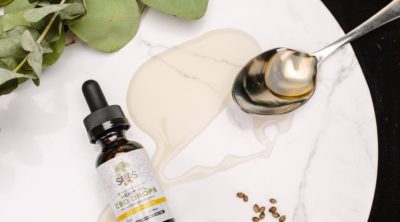
Calendulas are not only known for their prettiness and colors, but also for their amazing medicinal properties that have benefited us humans for ages. This HolisticZine article gives a brief insight about these incredible flowers.
Calendulas have always fascinated me because of many reasons. I always found them facing the sun. Watching them soak the celestial rays of the magnificent sun was something that I really enjoyed. They looked so beautiful, the rays of the sun made their appearance all the more bright. I would purposely sprinkle a few drops of water on them, and watch the rays making the water drops look like pearls. You can say that it is my fascination towards these flowers that made me do some research on them, the findings of which, made them all the more special. They are not ‘just’ a variety of awesome garden flowers, they are much more than that!
Meaning
The name ‘Calendula’ is derived from a Latin word Kalendae, which means, the ‘first day of the month’. Perhaps, they are so named because they tend to bloom at the first day of the month. Also, if you have noticed, the word ‘calendula’ also seems very similar to the English term ‘calendar’. This name was given to them because they bloom almost all throughout the year. The other names include, Pot Marigold, Mary Bud, Bull’s Eyes, Summer Bride, and Husbandmans Dial.
This flower is also the October birth flower. This is the reason why a calendula tattoo is very popular among those born in the month of October. When it comes to its religious significance, these flowers represent the Virgin Mary. They are also associated with characteristics such as warmth and friendliness because of a strong connection with the sun.
Scientific Classification and Growth
| Scientific Facts |
| Family: Asteraceae |
| Genus: Calendula |
| Kingdom: Plantae |
| Order: Asterales |
| Tribe: Calenduleae |
These flowers are native to the region of east Macaronesia throughout the Mediterranean, connecting to the land of Iran. Their genus has about 12 to 20 species which consist of both annual plants and plants that can live for more than 2 years. However, the most commonly used species is Pot Marigold (Calendula officinalis).
They grow up to 12 to 24 inches in height. The color of the petals vary from light to dark orange, yellow, gold, purple, and red. Because they are Mediterranean, they grow best in an absolutely sunny environment with moderately fertile soil and partial shade. They can be grown anywhere, from kitchen gardens to containers, and will last long, even without any extra maintenance. The only thing that you need to take care of, is to remove the weeds and grow them at least 9 to 10 inches away from each other, so that they get enough space to spread their roots and branches. They have unusual curlicue seedpods, and can reseed themselves easily. This makes them one of the ideal flowers to grow in containers. Remember, I told you that calendula flowers have more uses than being just a beautiful garden flower. These benefits will be discussed in the following section.
Uses and Benefits
Calendulas consists of antiviral, anti-inflammatory, and antigenotoxic properties. Listed below are their various uses.
- Did you know that the ancient Romans used to rub these flowers to treat scorpion bites? Rubbing the flower or massaging its oil on the affected area can prove beneficial in reducing pain and inflammation, especially if caused by a wasp or a bee sting.
- Their extracts are also used in various beauty products. It is said that rinsing your hair with these flowers help in reducing dandruff.
- Calendula oil also helps in getting rid of toothaches, headaches, sprains, menstrual cramps, stomach ache, fever, etc.
- Many people also use the flower’s petals in soap. This is because of the natural properties they contain, which prove to be useful for treating skin conditions such as acne, rashes, wounds, sunburns, eczema, etc.
- Using calendula creams can also help you get rid of dry or chapped skin. Not only this, they also work great for diaper rashes in infants.
- Because they are a rich source of natural antioxidants, many people grow these flowers in their kitchen gardens and use them for making tea. This concoction proves to be beneficial for treating sore throat, gastric ulcers, and even oral lesions.
I can now understand why these flowers blossom almost all throughout the year. I mean, you do need them quite often so that you can get rid of the ailments that tend to trouble you almost every other day, right? Make sure you have them grown in your house so that you can avail the aforementioned benefits.


